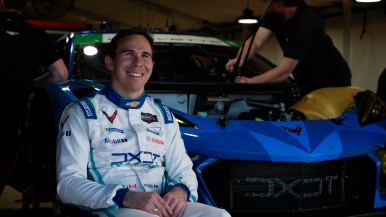Reutlingen, Germany – This year once again, the gifts under the Christmas tree will be emitting beeps, buzzes, and radio waves: according to Bitkom, some 70 percent of Germans will be giving digital gifts. This could be a smart watch, a game console, or of course a cell phone. This also means that Bosch will figure prominently under people’s Christmas trees, even though few may realize it. There’s at least one Bosch MEMS sensor in more than half the smartphones on the planet, and five of them on average in every new car. And there are millions more in drones, game consoles, fitness wristbands, and vacuum-cleaning robots. Bosch has produced more than ten billion of these miniature sensors in its wafer fab at Reutlingen, 40 kilometers south of Stuttgart, since 1995. “MEMS sensors are the building blocks of the connected world. They endow everyday objects with sensory perception and connect them with the internet,” says Jens Fabrowsky, member of the executive management of the Automotive Electronics division at Robert Bosch GmbH. With the number of connected devices rising fast – Gartner expects the global count to come to 20 billion by 2020 – MEMS sensors are sure to become chip-sized superheroes that we simply cannot do without.
Additional information:
Video: Acceleration sensor: how it works
10 billion MEMS sensors on the internet
Having established a regional presence in 1906 in North America, the Bosch Group employs 34,700 associates in more than 100 locations, as of December 31, 2020. According to preliminary figures, Bosch generated consolidated sales of $13.1 billion in the U.S., Canada and Mexico. For more information, visit www.bosch.us, www.bosch.ca and www.bosch.com.mx.
The Bosch Group is a leading global supplier of technology and services. It employs roughly 394,500 associates worldwide (as of December 31, 2020). According to preliminary figures, the company generated sales of $87.1 billion in 2020. Its operations are divided into four business sectors: Mobility Solutions, Industrial Technology, Consumer Goods, and Energy and Building Technology. As a leading IoT provider, Bosch offers innovative solutions for smart homes, Industry 4.0, and connected mobility. Bosch is pursuing a vision of mobility that is sustainable, safe, and exciting. It uses its expertise in sensor technology, software, and services, as well as its own IoT cloud, to offer its customers connected, cross-domain solutions from a single source. The Bosch Group’s strategic objective is to facilitate connected living with products and solutions that either contain artificial intelligence (AI) or have been developed or manufactured with its help. Bosch improves quality of life worldwide with products and services that are innovative and spark enthusiasm. In short, Bosch creates technology that is “Invented for life.” The Bosch Group comprises Robert Bosch GmbH and its roughly 440 subsidiary and regional companies in 60 countries. Including sales and service partners, Bosch’s global manufacturing, engineering, and sales network covers nearly every country in the world. The basis for the company’s future growth is its innovative strength. At 126 locations across the globe, Bosch employs some 73,000 associates in research and development, as well as roughly 30,000 software engineers.
Additional information is available online at www.bosch.us, www.iot.bosch.com, https://us.bosch-press.com, https://twitter.com/BoschPress
Exchange rate: 1 EUR = 1.2171
Mobility Solutions is the largest Bosch Group business sector. In 2015, its sales came to 41.7 billion euros, or 59 percent of total group sales. This makes the Bosch Group one of the leading automotive suppliers. The Mobility Solutions business sector combines the group's expertise in three mobility domains – automation, electrification, and connectivity – and offers its customers integrated mobility solutions. Its main areas of activity are injection technology and powertrain peripherals for internal-combustion engines, diverse solutions for powertrain electrification, vehicle safety systems, driver-assistance and automated functions, technology for user-friendly infotainment as well as vehicle-to-vehicle and vehicle-to-infrastructure communication, repair-shop concepts, and technology and services for the automotive aftermarket. Bosch is synonymous with important automotive innovations, such as electronic engine management, the ESP anti-skid system, and common-rail diesel technology.
Bosch Connected Devices and Solutions GmbH was founded in 2013 and is a fully owned subsidiary of Robert Bosch GmbH. The company was set up to design, develop and market innovative connected devices and tailor-made solutions for the Internet of Things. Our competency in electronics, sensor technology and software enable new business models for global markets. Bosch Connected Devices and Solutions is headquartered in Reutlingen, Germany. In 2015 Bosch Connected Devices and Solutions opened offices in Chicago, USA and Shanghai, China, in 2016 a sales office in Singapore was opened.
For more information, go to www.bosch-connectivity.com



